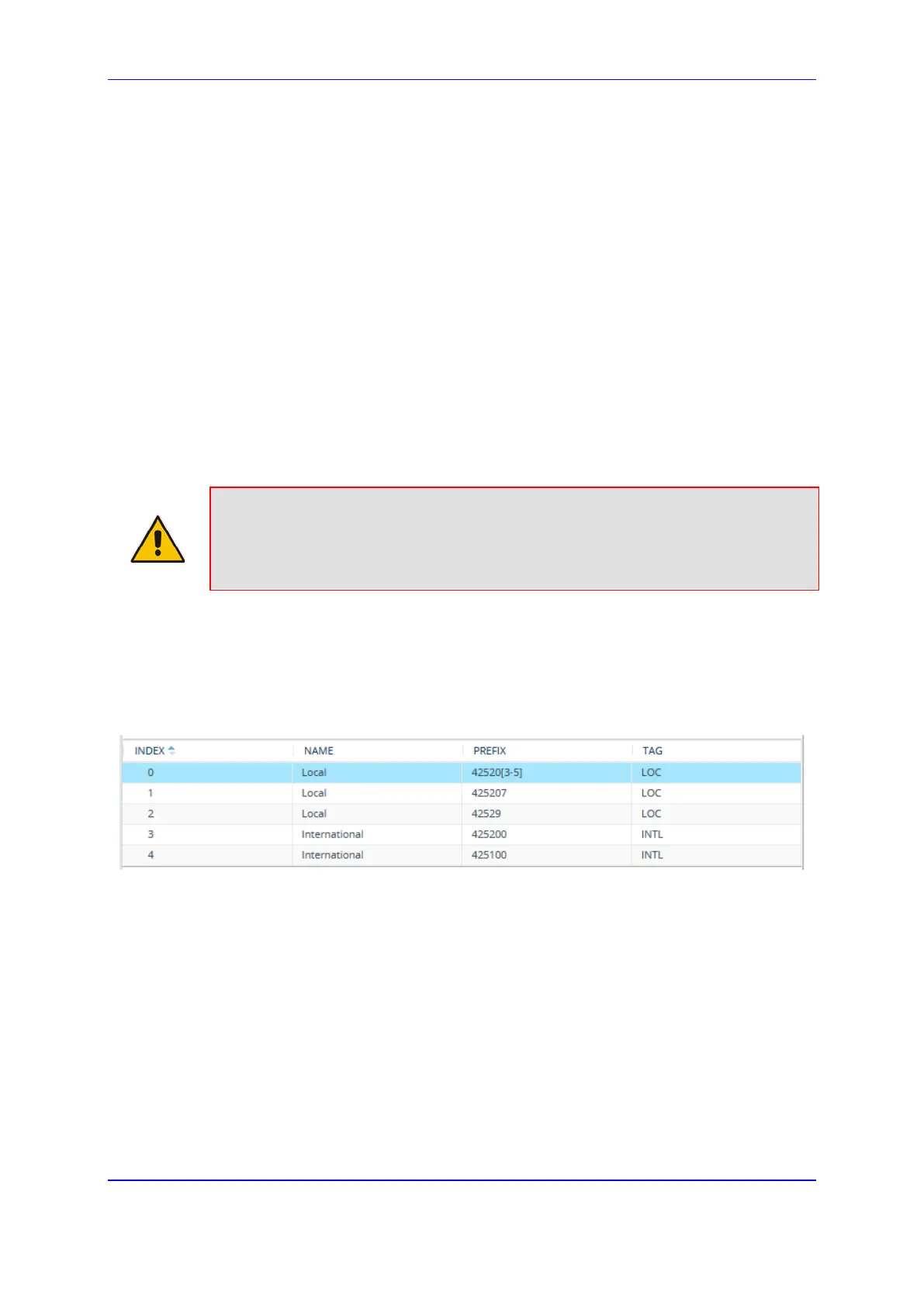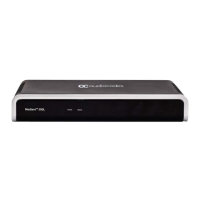Version 7.2 697 Mediant 1000B Gateway & E-SBC
User's Manual 35. Configuring Dial Plans
35.3 Using Dial Plan Tags for IP-to-IP Routing
For deployments requiring hundreds of routing rules (which may exceed the maximum
number of rules that can be configured in the IP-to-IP Routing table), you can employ tags
to represent the many different calling (source URI user name) and called (destination URI
user name) prefix numbers in your routing rules. Tags are typically implemented when you
have users of many different called and/or calling numbers that need to be routed to the
same destination (e.g., IP Group or IP address). In such a scenario, instead of configuring
many routing rules to match all the required prefix numbers, you need only to configure a
single routing rule using the tag to represent all the possible prefix numbers.
An example scenario where employing tags could be useful is in deployments where the
device needs to service calls in a geographical area that consists of hundreds of local area
codes, where each area code is serviced by one of two SIP Trunks in the network. In such
a deployment, instead of configuring hundreds of routing rules to represent each local area
code, you can simply configure two routing rules where each is assigned a unique tag
representing a group of local area codes and the destination IP Group associated with the
SIP Trunk servicing them.
Note:
• Source and destination tags can be used in the same routing rule.
• The same tag can be used for source and destination tags in the same routing
rule.
The following procedure describes how to configure IP-to-IP routing based on tags.
To configure IP-to-IP routing based on tags:
1. In the Dial Plan table, configure a Dial Plan (see ''Configuring Dial Plans'' on page
689). For example, the Dial Plan file below defines two tags, "LOC" and "INTL" to
represent different called number prefixes for local and long distance calls:
2. For the IP Group or SRD associated with the calls for which you want to use tag-
based routing, assign the Dial Plan that you configured in Step 1.
• IP Groups table: 'Dial Plan' parameter (IPGroup_SBCDialPlanName) - see
''Configuring IP Groups'' on page 333
• SRDs table: 'Dial Plan' parameter (SRD_SBCDialPlanName) - see ''Configuring
SRDs'' on page 317
3. In the IP-to-IP Routing table (see ''Configuring SBC IP-to-IP Routing Rules'' on page
656), configure a routing rule with the required destination and whose matching
characteristics include the tag(s) that you configured in your Dial Plan in Step 1. The
tags are assigned under the Match group, using the following parameters:
• 'Source Tags' parameter (IP2IPRouting_SrcTags): tag denoting the calling user
• 'Destination Tags' parameter (IP2IPRouting_DestTags): tag denoting the called
user

